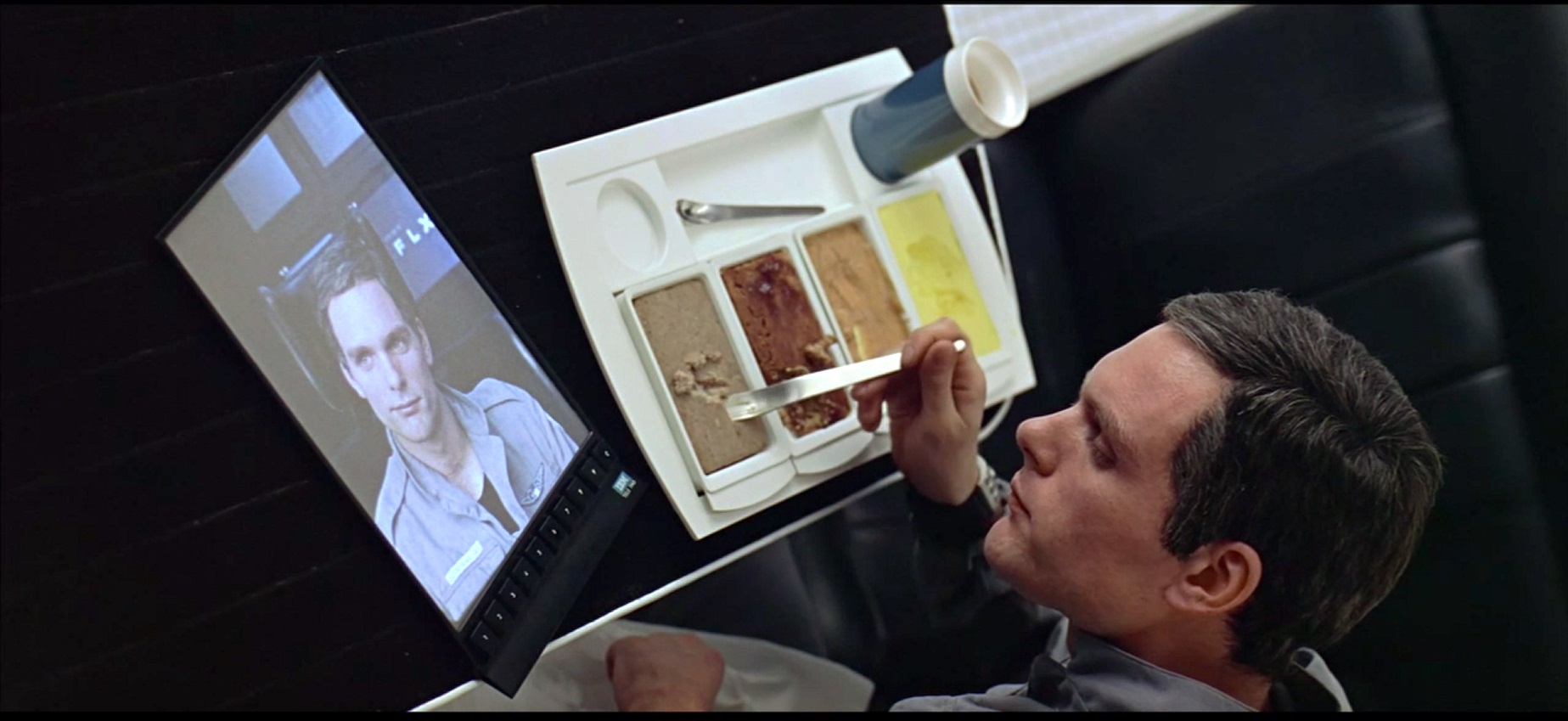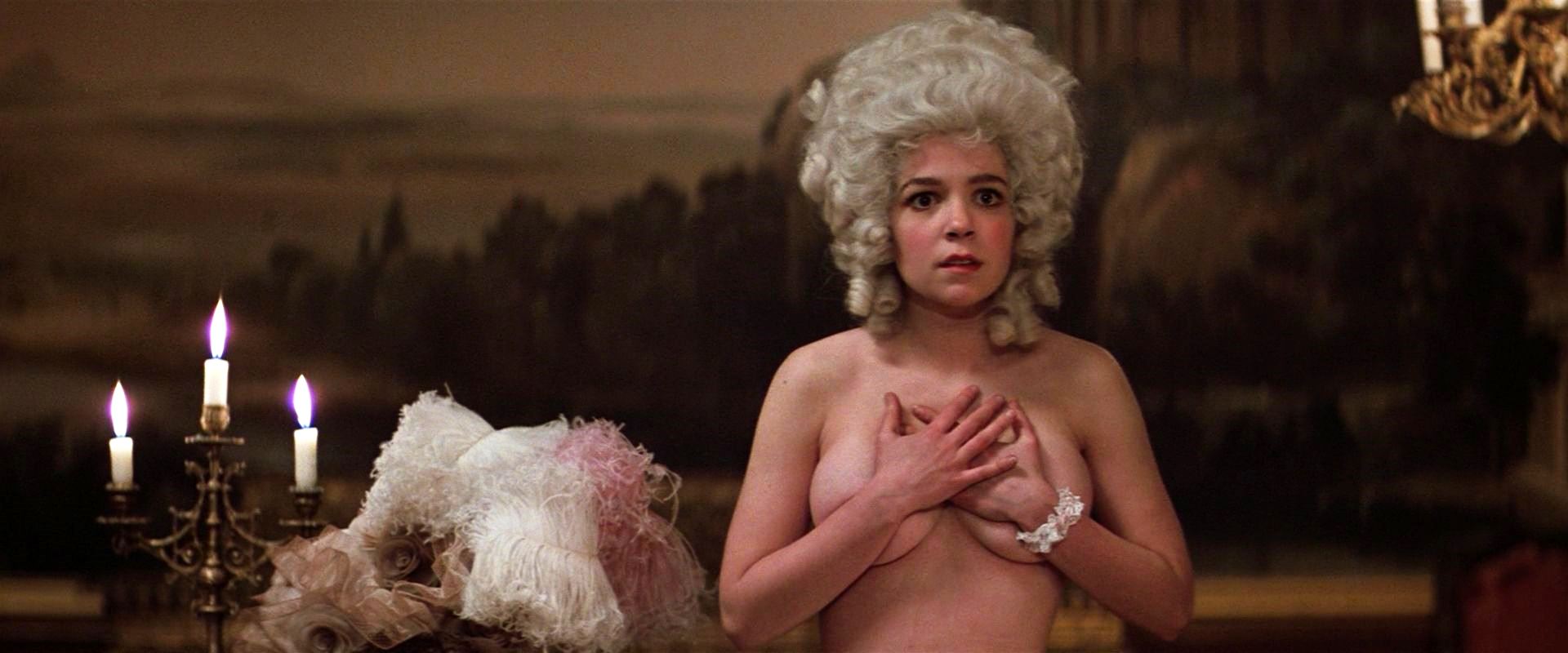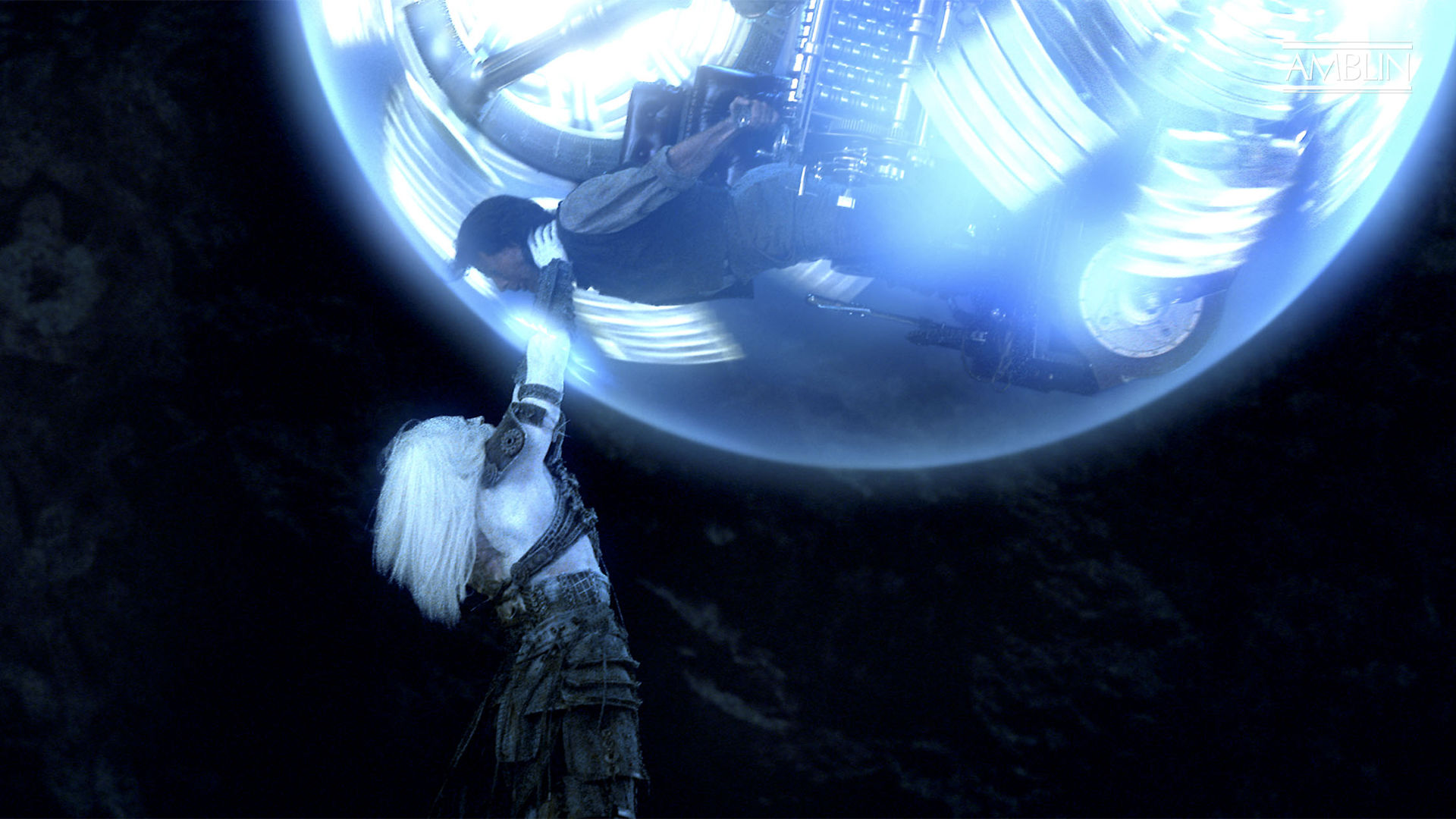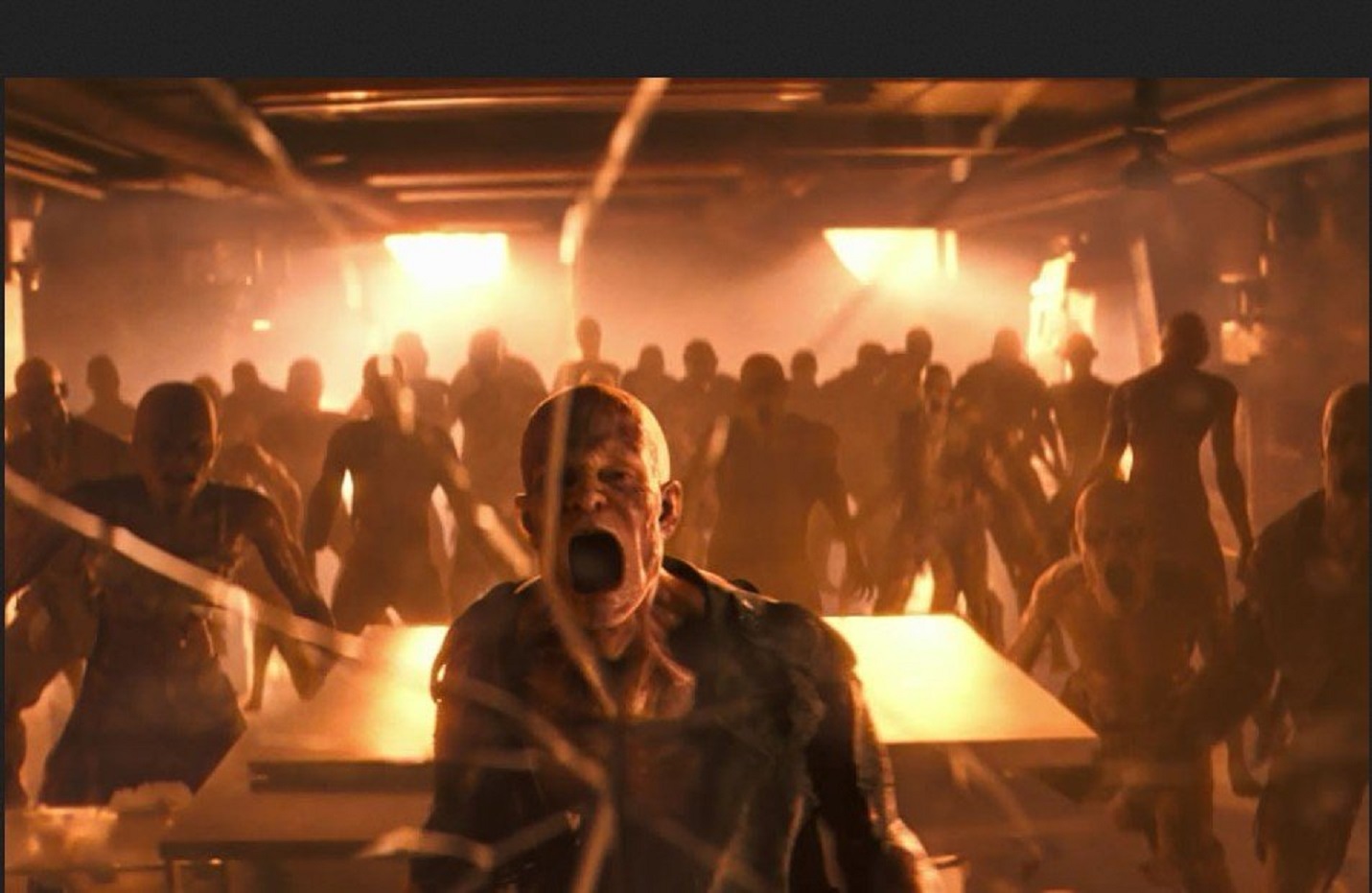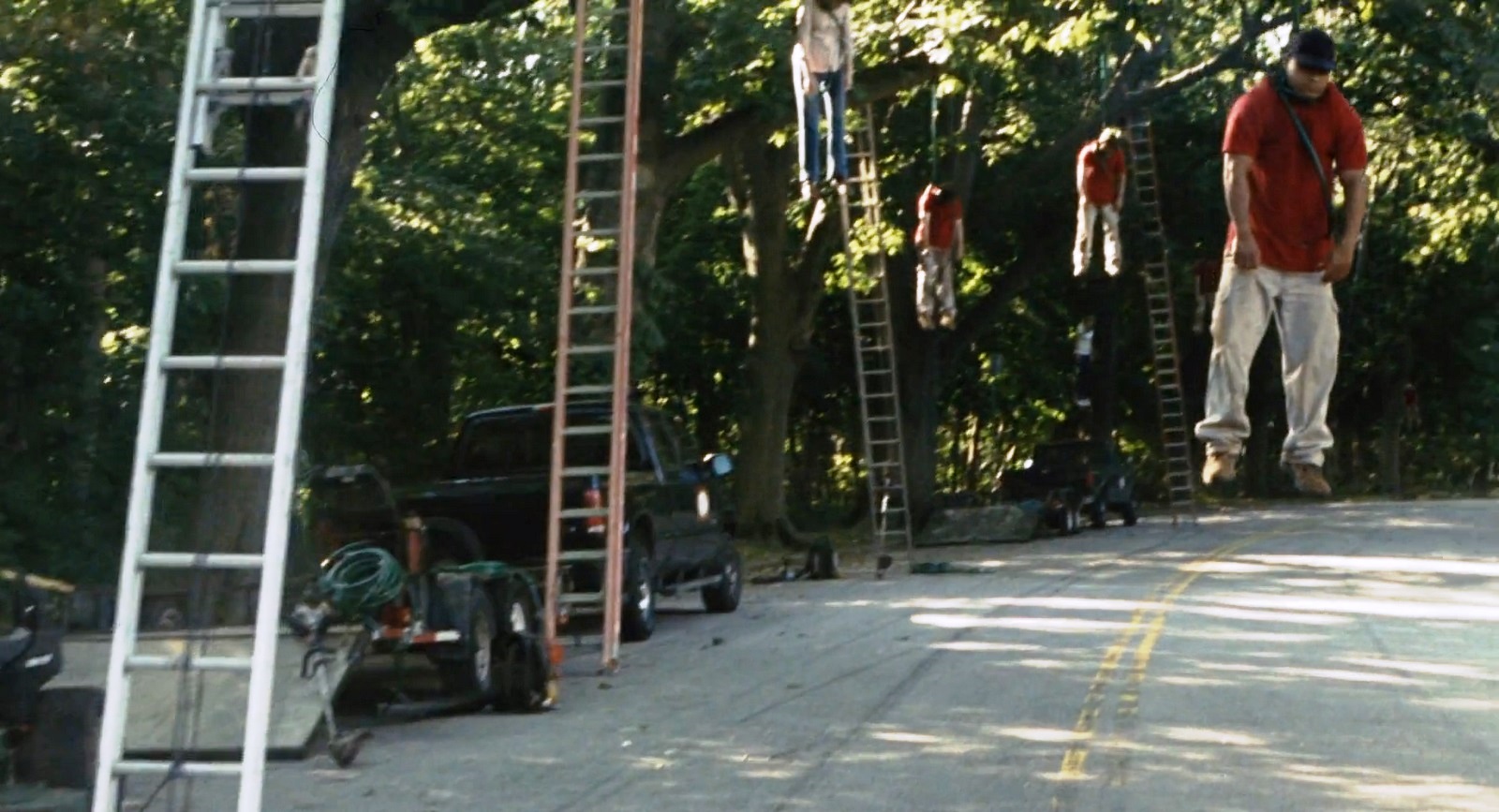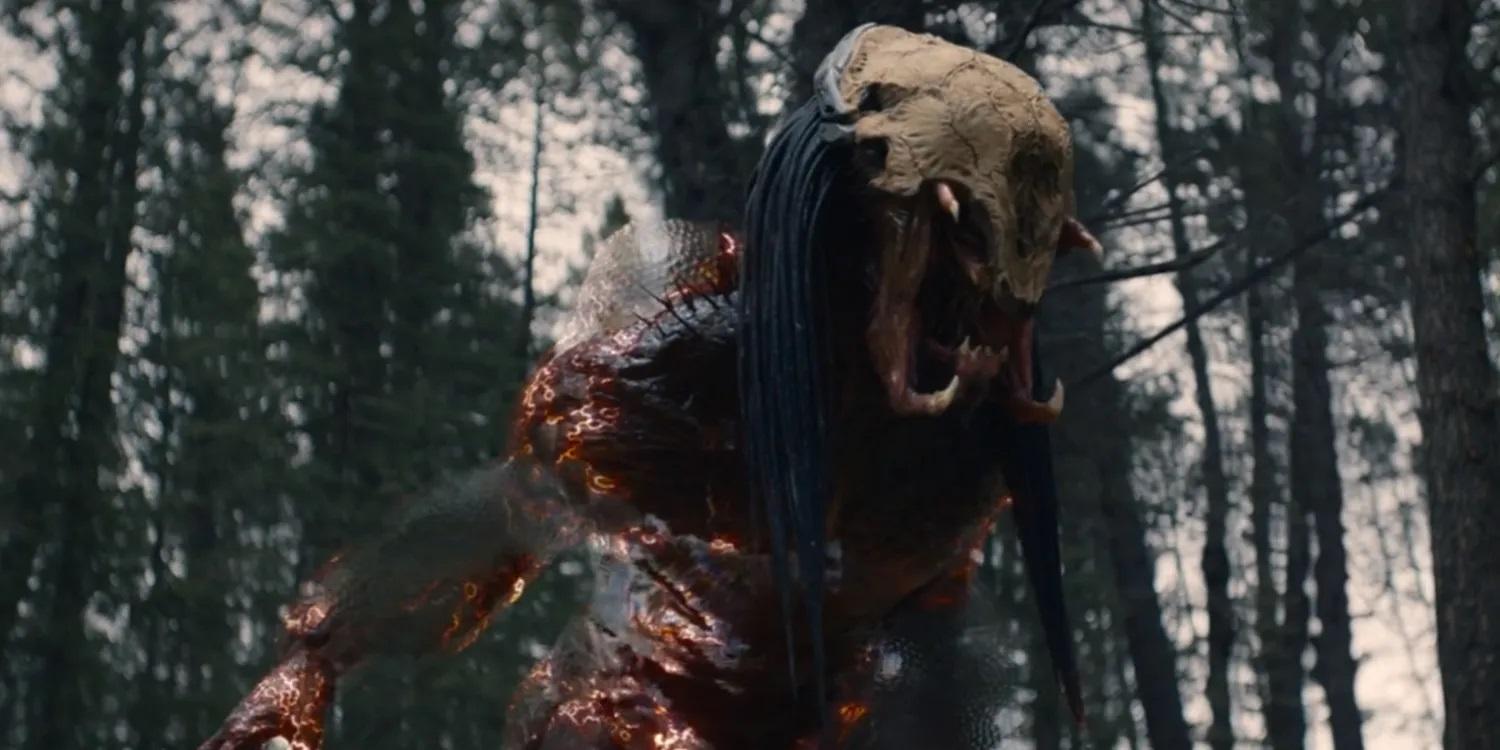
By Emad El-Din Aysha, PhD
The other stuff is a bit more flimsy but they are forgivable sins given how competent the movie is and how sincere it is. Jesse Ventura from the original movie has gone out of his way to praise it, so that’s good enough for me. As said above the cinematography is really nice, as is the music, with likeable characters – Naru and her brother make a great team – including the dog. The important thing is the mistakes she makes along the way, which she learns from, having to pay the price of seeing her brother skewered by the creature. And also how likeable she is and how easy it is to identify with her triumphs and failures. (She’s isn’t half bad too, with her deep, thoughtful brown eyes and maternal hips. Did I mention that she has lush, beautiful hair?) Not to forget her tribe and way of life, how they live in harmony with nature, living by its rules and keeping themselves in check. (You’re impressed with how much they know about plants and funguses and how to build things and from what materials; illiterate does not mean ignorant). There are cheesy moments, like when her fellow tribesman gets killed by the lion while warning her about it, and the scene where she’s running away from the predator like I said before. Not to forget how laughablely cruel and unwashed the Frenchmen are. I don’t have a problem with derogating them but there’s ways of doing that. The movie Nightbreed (1990) has a whole arsenal of rednecks going after the tribes of the moon but you positively enjoy the creative and ‘painful’ ways that they are killed, one by one. It doesn’t work as well here, except for the scene where the predator slices off someone’s head along with the tree – makes it look like the tree is bleeding – he’s standing next to, and how a bullet shot at his helmet fires back at the shooter!
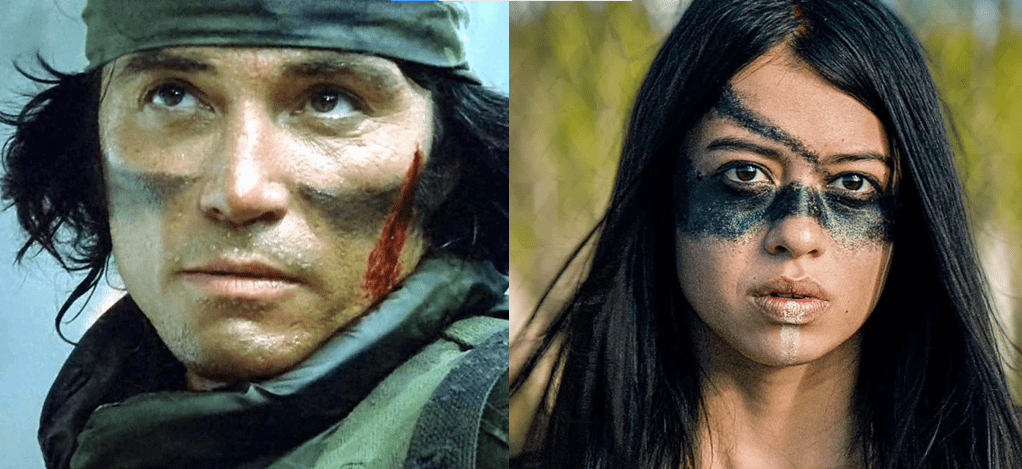
These little gaffs lead to cascading contradictions. Hence the ridiculous scene where the one French trapper who is left, the one who imprisoned and sliced at her brother (see below), is now nice and clean at a small waterfall getting washed up and drinking. Now he knows about etiquette and hygiene? Also, why did Naru hesitate with the lion and then the predator when she’s so adept at killing the Frenchmen at their camp? I presume because they threatened her defenseless, muzzled dog?
Still it’s a mixed bag. The hunters in her tribe are arrogant when it comes to a mere girl like Naru but with all of that they behave responsibly, have a good skillset (making that stretcher), and are rational in their decisions. They always go in groups and are told to stay close to each other at all times, which flies in the face of most horror movies nowadays, even formidable sci-fi romps like Alien Covenant. (Please see Christina Alongi’s “Top 10 WORST Horror Movie Tropes”).[1] Taabe is number one, if you ask me, with complete respect to Naru. The scene where he’s riding the horse and taking it to the predator is magnanimous and completely believable and you really feel sorry for him and respect him when he gets killed, a tribute to (the dearly departed Sonny Landham) Billy’s death scene in the original movie, slowing down the creature. The predator itself is pretty cool, up to a point. Interesting and creepy creature design and a good body performance by Dane DiLiegro; don’t know why ash bothers him though and messes with his cloaking device.[2] He’s a kind of sleeker, sexier version of the predator, although I still prefer Kevin Peter Hall from the beloved classic. I also still can’t accept that he can take so much punishment and still keep on going, like the bear trap and the spear through the shoulder and the multiple arrows and axe wounds. The original predator wasn’t like that. The special effects could have been a bit better, especially in this day and age. They overused the florescent blood and relied too much on CGI instead of practical gore effects and the invisibility effects didn’t impress me. (Oh, and I still don’t think the predator could beat a grizzly that easily or waste its time going after Naru after defeating a worthy opponent like that).

Still there are so many other things to commend this movie, especially what’s lurking behind the scenes. You ‘feel’ that the predator is really a stand-in for the impending white colonisation of the new world. Hence the scene at the end where Naru tells her tribe they aren’t safe and need to go to higher, more defensible ground; they slew the monster but there’s a bigger threat lurking round the corner. (The opening scene shows you a pristine, uncorrupted land). It’s exemplified by the end credits with a fleet of predator aliens coming back to reclaim the gun from the Frenchmen, the one you see in Predator 2 (1990). You also got the distinct feeling that the scene where the Frenchmen make Taabe bleed is a reference to torture as a tactic in the war on terror and that, by extension, the laser guided spikes the predator fires are a reference to so-called ‘smart’ bombs and missiles. These mindless things kill indiscriminately and so they can easily harm their own progenitors if you happen to be in the wrong place the wrong time. The natives however only hunt because they have to, and fight honourably.
Even some of the devices that the predator launches out against the trappers look like drones. (Bad sfx shot there however). No complaints on the thematic front, least of all from me.
The apprentice at work
There are other problems with the movie but they are the problems that always afflict sequels and franchises. The predator losing its forearm is probably a reference to Danny Glover in the sequel movie, just as much as the pistol was. Having the predator being honourable is one of those mistakes left over from the sequel given that in the first movie Dutch tells Elpidia Carrillo that the creature would shoot her even if she didn’t have a weapon, no sport. But for some reason they had to change the beast in the sequel. They also had to make him near bullet proof and then have the compulsory scenes when the creature is wounded and fixing itself. These mistakes happen, even in series like Blade, Alien and The Matrix, so it’s inevitable but still annoying. The first movie is just a classic horror, sci-fi action flick like no other, a movie that’s aged remarkably well and still draws new generations to it because it’s so cool, nail-biting, funny, atmospheric and exquisitely done. But there’s more to it than just that. The swagger and grandeur of the movie just can’t be repeated. And John McTiernan brought his own distinct style to the movie, with low angle shots and lens flares and an appropriate usage of colour. His movies tend to have a grey tinge to them but with a movie set in the jungle its’ all greens and browns and blues and reds. Not so here. Prey is by the book with, good and detailed but also generic and with a ‘grey’ tinge to everything.
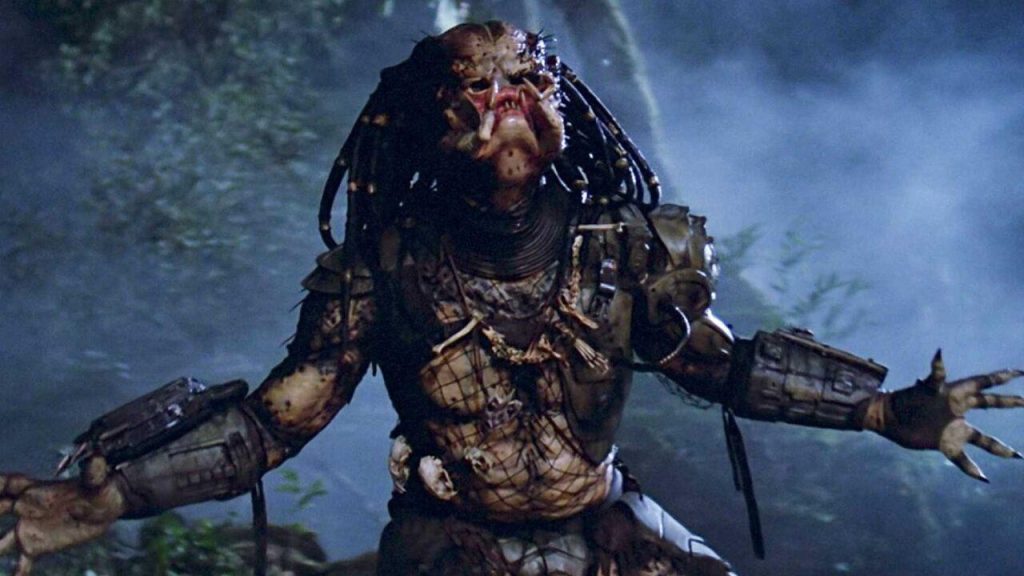
This movie is also too person-centric. Arnold was the unquestionable hero of the original movie but the whole team were distinguished as hell and had their own character arcs and pet peeves and memorable one-liners. Arnold practically insisted on it since he was always drawn to a group-based movie like Westerns where you had a whole band of tough guys saving the day, even if only one survived. That was very professional of him. Sadly that doesn’t happen here, with too much focus on someone who is ‘almost’ a Mary Sue. That being said my main qualm is that the movie needed to be better at what it was doing. More culturally authentic. I’ve watched a few TV series told from the Native point of view in my time, even in my childhood and they felt more authentic than this. (The Outcasts had the black hero being raised by Indians). Even as a kid whenever I played cowboys and Indians, I always played the Indian. This feels like imitation, trying to tell a tale in an Indian-style campfire, creation myth fashion but falling into too many Hollywood clichés and teenager antics instead.[3] The director, Dan Trachtenberg, is a talented guy, having made 10 Cloverfield Lane (2016), another female-heroine epic with Mary Elizabeth Winstead from The Thing (2011) fame. But he’s no John McTiernan, let alone Michael Mann or Terrence Malick. I’m referring of course to the original Predator (1987), The Last of the Mohicans (1992) and The New World (2005), in that order. This movie really needed someone of their caliber behind the camera. Not to forget Kevin Costner and his legendary Dances with Wolves. (Well maybe not him. He has repeatedly failed to do anything with the same charm and warmth and moral magnitude. Leaving us instead with movies like Waterworld and The Postman. Carroll Ballard from Never Cry Wolf [1983] would be a safer bet).

Still, can’t have everything. If it leads to more Native American-style movies with Indian heroes, and heroines, I’m all for it. To bring back Chicon 8, there’s a swelling number of such works, at least in literature, such as The Marrow Thieves and the sequel Hunting by Stars, Earthdivers, Tread of Angels, Sisters of the Neversea and Never Whistle at Night. There’s also counter moves to ban such books and comics (SF, fantasy, horror, young adult) from the education system.[4] Finally, if Prey gets Predator back on track, so be it.
The next time they make a predator movie they can bring in the original director, McTiernan; he should be out of prison by now. And they can name it Revenge of the Director’s Cut for all I care!!!
Acknowledgements
Special thanks to Ahmed Al-Mahdi, fellow member of the Egyptian Society for Science Fiction (ESSF), for encouraging me to join Chicon 8. (He participated in the “Overcoming Structural Challenges Across the Globe” session). And heaps of praise and thanks for the expert and dedicated team who had faith in me and made the convention work to a tee.
NOTES:
[1] I incorporated the advice and insights from that video in my presentation for “Finding Optimism and Comfort in Horror”. If it wasn’t for her videoed advice I wouldn’t have known my head from my feet in that particular session!
[2] Didn’t catch onto that myself. Had to watch the review by TBR Schmidt. The pesky French burned down a whole forest just to do that!
[3] Check out Christina Alongi’s video on cultural appropriation vs. appreciation.
[4] Please see the “Censorship and SFF” and “Censorship and the White-Washing of America” panels.

